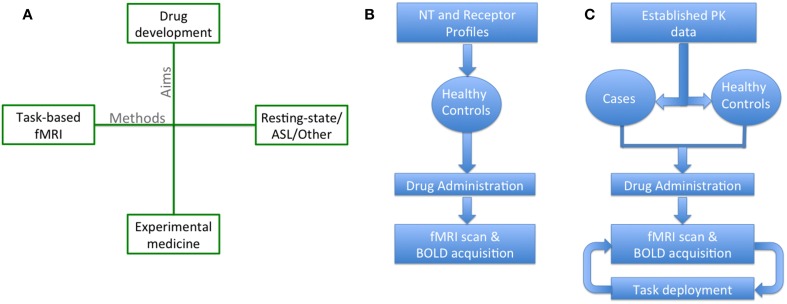Figure 1.
Schematics representing different kinds of phMRI studies. (A) The aims of phMRI (vertical axis) can be divided into “challenge” studies aimed more at drug development (often using novel compounds, and occurring in early-phase clinical trials, using healthy volunteers), and “activation” studies that can be classed as experimental medicine (more often using an established/marketed compound, and may use clinical samples). Similarly the methods (horizontal axis) can be divided into those focused on “standard” task-based fMRI, and those using non-task methods (resting-state fMRI, ASL, or other MRI contrasts). (B) A schematic of a typical “challenge” study focusing on drug development. (C) A schematic of a typical “activation” or experimental medicine study. NT, Neurotransmitter; fMRI, functional Magnetic Resonance Imaging; BOLD, Blood Oxygen Level Dependent; ASL, Arterial Spin Labeling.

